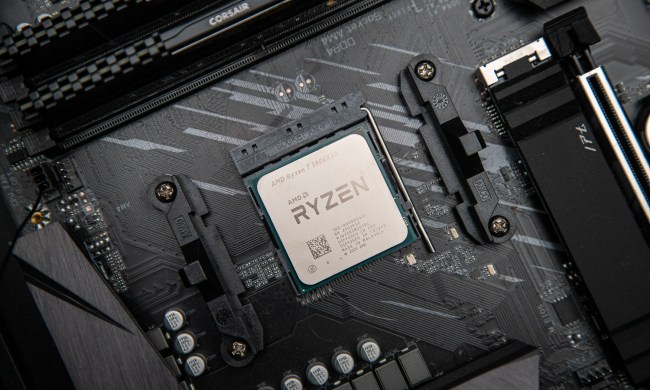While 3D printing might be most commonly used to print smaller-sized models or prototypes, that doesn’t mean it can’t also be used to print larger objects. Much, much larger. In Belgium, Europe’s largest 3D printer was recently used to print an entire house. Unlike other 3D-printed houses we’ve covered (of which there are a handful), this one has two floors — making it one of the biggest and most ambitious 3D-printed housing projects we’ve seen.
“[We used a] gantry printer delivered by COBOD [based in Denmark],” Emiel Ascione, project manager at Kamp C, the firm behind the project, told Digital Trends. “It was their prototype BOD2 [printer]. A gantry printer operates basically like the most common small plastic printers and uses the same type of software, [but on a much larger scale]. The concrete, the silo, as well as the mixing and pumping installation. were delivered by our partner Weber.”
The enormous gantry printer, measuring 32 feet x 32 feet, was used to print the shell of the house. Additional features such as the roof and windows were then added the old-fashioned way. It boasts numerous innovative sustainable features, including solar panels and underfloor heating.

While Ascione refers to the structure as a house, he notes that the term isn’t altogether accurate. The building, which is almost 980 square feet, is actually “not intended for residential purpose.” However, “we call it ‘house’ because it has the typical dimensions of a residential dwelling.” In fact, it’s being used as more of a demonstrator for conferences, expos, and other events.
“Printing this building is mainly a statement,” Ascione continued. “It shows the construction industry the accessibility and potential of this technique.” The benefits of additive manufacturing are already paying off in a wide range of other industries, he said. It’s about time that housing caught up with them.
Although this remains a proof of concept for now, Ascione believes that it could well pave the way for future residential homes. At a time when affordable housing is extremely limited, this could be one way that developers in the future could quickly and affordably create high-quality basic homes with a surprising amount of variation along the way.
“A huge benefit of this technique is that [it is free of] complexity,” he said. “You could print a series of houses and make each of them unique without considerable impact on the cost.”


